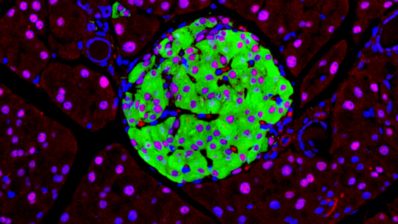Development is one of the broadest areas of biology. It nourishes from genetics, epigenetics, molecular and cellular biology, cell signalling and even evolution. The reason it is so complex is because it aims to unravel the tricky question of how an organism develops from a single cell.
The developmental biology unit at the Department of Experimental and Health Sciences, Pompeu Fabra University (DCEXS-UPF) that Fernando Giráldez directs uses three model systems – chicken, zebra fish and mice – and both in vivo and cell culture experiments to try to understand how different parts of the nervous system are formed. The unit, created in 2001 and with a current staff of 12 members, has three main lines of study, lead by Giráldez himself, Berta Alsina and Cristina Pujades.
Cristina Pujades studies the patterning of the hindbrain, an area of the central nervous system (CNS) that functions to co-ordinate motor activity and to regulate unconscious functions, such as breathing and blood circulation. The hindbrain is segmented into metameric units called rhombomeres that govern the later organisation of this part of the brain. For instance, in the case of branchiomotor neurons which innervate the face, the metameric unit appears to be a pair of rhombomeres (eg. motoneurons born in rhombomeres 4 and 5 give rise to the facial nerve). Pujades tries to understand which genes are involved in the formation of borders between the rhombomeres and how cells acquire their positional identity within them. The hindbrain also segregates signalling molecules that affect the development of the surrounding tissues, such as the otic primordium. This is the primordium of the inner ear, a system studied by Alsina and Giráldez.
The labyrinthic ear
The vertebrate inner ear, responsible for the senses of hearing, balance and acceleration, is a complex labyrinth that contains two main types of cells involved in sensory function:
- ciliated cells that sense the external inputs
- sensory neurons that convey the information to the Central Nervous System
Both sensorial and neuronal cells originate from the same homogeneous group of cells, and Alsina and Giráldez are studying which transcription factors and signalling molecules are involved in inducing a neuronal versus a sensory fate. So far, it is known that Sox2, a gene made recently famous for being one of the four genes used to induce pluripotency in adult cells, is involved in conferring sensorial precursor identity, which is the focus of research of Giráldez. Berta Alsina, on the other hand, focuses on neural specification, one of the first patterning events of the otic placode. “We believe that the understanding on the early events of otic neurosensory development will be relevant to other sensory organs” says Alsina.







